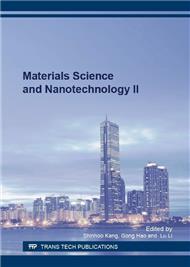p.31
p.40
p.45
p.50
p.57
p.65
p.70
p.75
p.85
Down Milling Cutting Parameters Optimization Utilizing the Two Level Full Factorial Design Approach
Abstract:
The direction of feeding the work piece and cutter rotation determines the type of machining mode either it is up milling or down milling. Each of this machining mode affects the quality of machined surface produced. This paper described the experimental design of down milling operation on a stack of multidirectional CFRP/Al2024. Three cutting parameters were considered namely, spindle speed (N), feed rate (fr) and depth of cut (dc). Two level full factorial design was utilized to plan systematic experimental methodology. The analysis of variance (ANOVA) was used to analyse the influence and the interaction factors associated to surface quality. The results show that the depth of cut is the most significant factor for Al2024, and for CFRP the spindle speed and feed rate are significant. Surface roughness of CFRP is found to be at 0.594 μm at the setting of N = 11750 rpm, fr = 750 mm/min and dc = 0.255 mm. Meanwhile for Al2024, the surface roughness is found to be at 0.32 μm. The validation test showed average deviation of predicted to actual value surface roughness is 3.11% for CFRP and 3.43% for Al2024.
Info:
Periodical:
Pages:
57-61
Citation:
Online since:
August 2016
Price:
Сopyright:
© 2016 Trans Tech Publications Ltd. All Rights Reserved
Share:
Citation:


